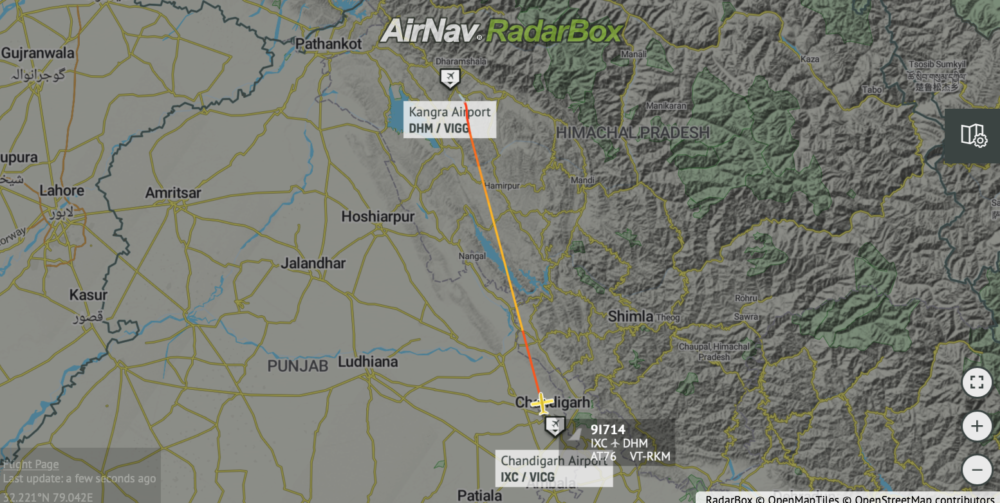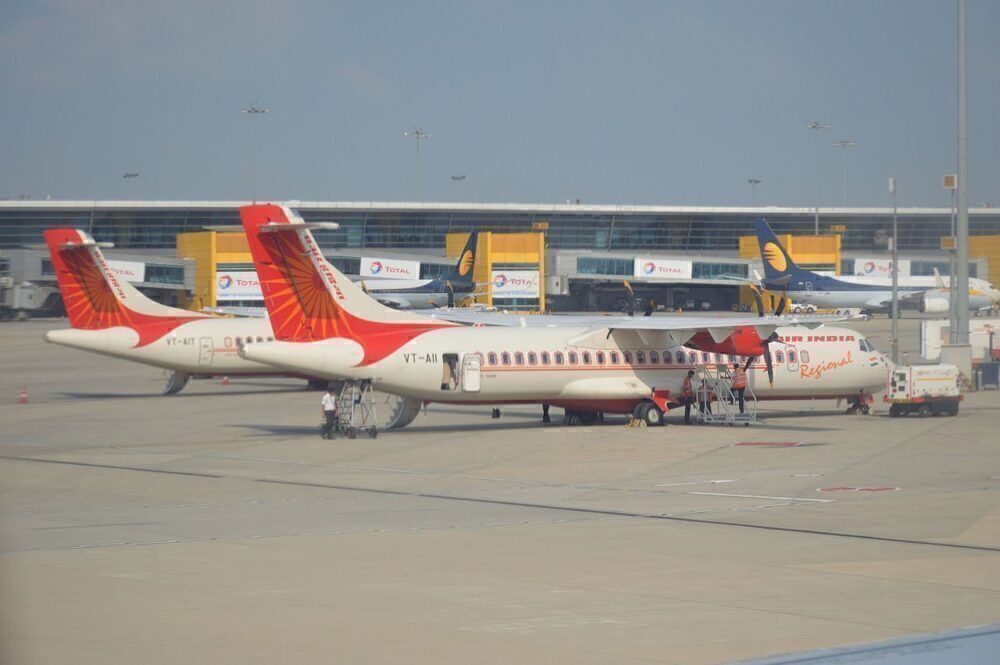An Air India Regional ATR-72 operated by Alliance Air experienced a bird strike during its descent to Dharamsala/Kangra Airport. Flying from Chandigarh, the incident took place on March 20th with a photo of the aircraft showing damage to the wing, close to the fuselage. While damage indicates a large bird and significant impact, the aircraft landed safely, delivering 45 passengers to their destination.
Flight details
It appears that flight 9I714 was a fairly routine trip for most of the 28 minutes of flight time. The ATR 72-600 departed from Chandigarh (IXC) at 13:26 for Dharamsala (DHM) - also known as Kangra Airport.
However, during the aircraft's descent to Dharamsala, it experienced a major bird strike. The Twitter post by JADEC notes that the bird involved was possibly a raptor - a bird of prey. These birds can get quite large and have a broad wingspan, which is evidenced by the Twitter image below:
Thankfully, the aircraft performed a safe landing with the 45 passengers it had onboard. The turboprop even arrived 30 minutes ahead of schedule, at 13:54 local time.
Stay informed: Sign up for our daily and weekly aviation news digests.
About the incident aircraft
The aircraft involved was an ATR 72-600 with registration VT-RKM. This three-year-old turboprop was operated by Alliance Air, which is a wholly-owned subsidiary of Air India, founded in 1996.
Planespotters.net notes that this particular ATR 72-600 is configured to seat 70 passengers in an all-economy layout. With manufacturer serial number (MSN) 1463, it appears that the aircraft has only ever flown with Alliance Air since it emerged from ATR facilities in Toulouse, France.
As for Alliance Air as a whole, it has a total of 19 aircraft in its fleet. Nearly all of these are ATR 72 turboprops ranging between three and six years old. Only a single 26-year-old ATR 42 is listed in this fleet.
Bird strikes
Unfortunately, bird strikes are an occasional occurrence in the world of commercial and general aviation. These incidents most often take place during an aircraft's take-off or descent and landing, when aircraft are flying at the same height as most birds.
Earlier this year, Simple Flying interviewed Captain Chris, a senior Airbus A350 training captain, and talked about how pilots deal with the risk of bird strikes. On this topic, Captain Chris said:
“Bird strikes are not common, but again it depends on the size of the aircraft and the size of the bird. A goose is going to cause more damage than a sparrow.â€
One prevention tactic that can be followed- particularly in bird hotspots- is to avoid or minimize maneuvering at low altitudes to avoid birds. Under 10,000 feet, pilots can keep their speed below 250 knots if possible. Then, below 2,000 feet, they can climb or descend at the maximum rate to reduce the flight time exposure to a strike hazard.
What's your reaction to the damage shown in the photo? Are you surprised by how significant it was? Let us know by leaving a comment.



